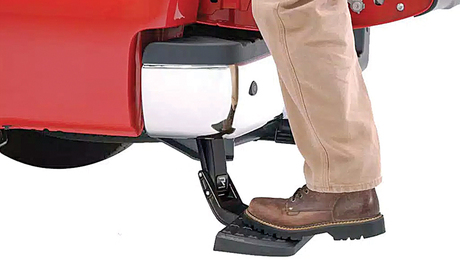*
I use yellow carpenter’s glue for most things. One thing to remember is that this stuff (like all PVA adhesives) does not bridge gaps very well, so make sure your joints mate tightly.
Polyurathane glue (ie. “gorilla glue”) expands as it sets to fill voids and irregularities. It comes in very handy at times.
Cyanoacrylate glue (similar to “crazy glue”) is usefull for things like mitered returns in very small moldings (ie. pieces too delicate to nail). It sets up in about 30 seconds, so no clamps or tape are required. It is also usefull in restoration/repair work. Its low viscosity allows it to wick into loose joints, avoiding the need for disassembly. But don’t carry this too far- cyanoacrylate is not a gap filler.















Replies
*
I use yellow carpenter's glue for most things. One thing to remember is that this stuff (like all PVA adhesives) does not bridge gaps very well, so make sure your joints mate tightly.
Polyurathane glue (ie. "gorilla glue") expands as it sets to fill voids and irregularities. It comes in very handy at times.
Cyanoacrylate glue (similar to "crazy glue") is usefull for things like mitered returns in very small moldings (ie. pieces too delicate to nail). It sets up in about 30 seconds, so no clamps or tape are required. It is also usefull in restoration/repair work. Its low viscosity allows it to wick into loose joints, avoiding the need for disassembly. But don't carry this too far- cyanoacrylate is not a gap filler.
*
I use yellow glue. The only time I would use polyurethane is if I needed waterproof(osity?), otherwise the cleanup hassles outweigh the benefits. I've done some unofficial testing, and in regular use it's no stronger than PVA. The reason to glue mitres in casing etc., is to seal the end grain of the material, and prevent moisture causing the material to move around. We all know end grain to end grain isn't very reliable, but sealing the endgrain with glue makes a really big difference.
*I also use yellow wood glue for all casing mitres, a spot between side casings and stools, a bead on the apron-stool joint, mitred returns for base, crown and chair. I also use pins to help keep the mitres togather. Don't use glue as a substitute for "no-line" mitres.
*
I carry three kinds.
Bread and butter is plain old yellow glue. I never brought brands, just whats on sale. Never occured to me that there was a difference, as I've never noticed one.
I use some white glue on long set ups, where I need a longer (10-20 min.) open time. Don't use this often, but it comes in handy for cabinets with lots of sides and tops.
I carry and use hot melt it comes in handy when I want to tack a piece in place quickly before nailing it, then once tacked in place with the hot melt, I nail or screw it in place.
*Gentleman, Might I add one other product that I have found useful. On exterior trimwork I have used with much success a vinyl adhesive chalk such as phenoseal. It has very good adhesion and will also fill an open joint. And the excess is cleaned with a wet cloth.
*
I've been a carpenter for 6 years and for the last two years a trim carpenter my question is what is the best glue to use for casing, base, crown moulding , etc.?
*I use glue for all my trimwork. But there are some things to remember, should you choose to also do the same.You would be gluing end-grain. This is the weakest glue joint there is. The best joint is side by side.Therefore, should you decide to use glue, keep that in mind, and only use glue where it might do the most good, though weak.I like to glue all miters. I use regular woodglue. If I think a joint might receive extraordinary stress, I use PL400. This glue will span gaps, and can be carved when hardened.Keep in mind that the glued joint must also have mechanical assistance. I use my pin nailer to nail in two directions. That way, the nails by themselves will hold, and the glue helps it hold better, over time.Where glue has proven most beneficial for me, is when running molding around things. I glue and pin-nail those small pieces first. Then, by the time I get to them, they are dry and the whole that they make can easily cover that area, without manipulation of the tiny miters.Hope this helpsPS: I recommend that you get a japanese water stone, 8000 grit, to carve your joints after the glue has dried..
*
In addition to agreeing with all of the above ( except that some cyanacrylates, do, fill gaps), I like to use white glue on light colored woods that will be clear finished. It dries clear, so I get a less visible glue line. Marine epoxies (different formulations for different jobs) are incredibly strong, and will cover very large gaps. Kneadable epoxy sticks work great in wallowed out hinge holes. Stick with it, you'll be an experienced, underpaid trim carpenter yet.